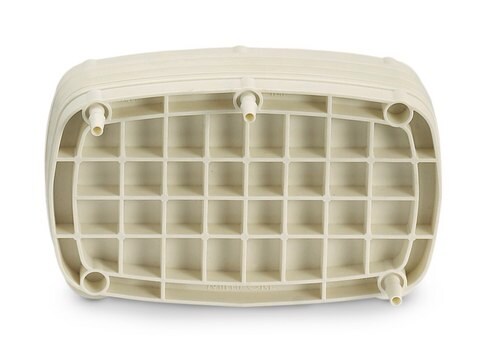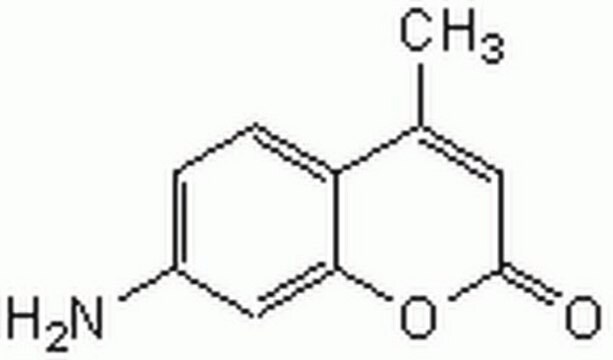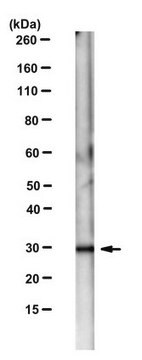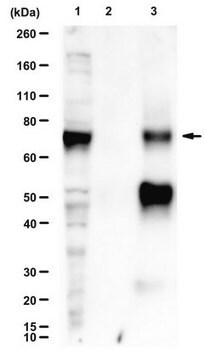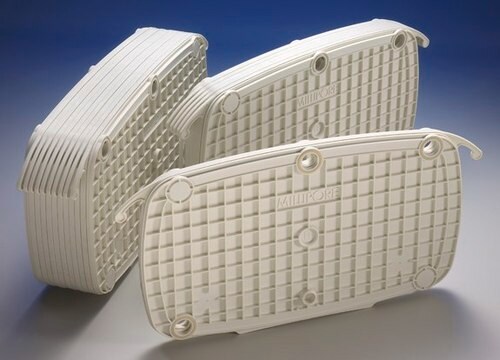MABE1886
Przeciwciało anty-BMAL1 (ARNTL), klon B1BH2
clone B1BH2, from mouse
Synonim(y):
Aryl hydrocarbon receptor nuclear translocator-like protein 1, BMAL1b′, Brain and muscle ARNT-like 1
About This Item
Polecane produkty
pochodzenie biologiczne
mouse
forma przeciwciała
purified immunoglobulin
rodzaj przeciwciała
primary antibodies
klon
B1BH2, monoclonal
reaktywność gatunkowa
mouse
reaktywność gatunkowa (przewidywana na podstawie homologii)
human (based on 100% sequence homology), rat (based on 100% sequence homology), chicken (based on 100% sequence homology)
opakowanie
antibody small pack of 25 μg
metody
ChIP: suitable
western blot: suitable
izotyp
IgG1κ
numer dostępu NCBI
numer dostępu UniProt
docelowa modyfikacja potranslacyjna
unmodified
informacje o genach
chicken ... Arntl(374115)
human ... ARNTL(406)
mouse ... Arntl(11865)
rat ... Arntl(29657)
Powiązane kategorie
Opis ogólny
Specyficzność
Immunogen
Zastosowanie
Analiza Western Blotting: Reprezentatywna partia wykryła BMAL1 (ARNTL) w aplikacjach Western Blotting (Yoshitane, H., et. al. (2009). Mol Cell Biol. 29(13):3675-86; Yoshitane, H., et. al. (2012). EMBO Rep. 13(5):455-61).
Epigenetics & Nuclear Function
Jakość
Western Blotting Analysis: 1 µg/mL of this antibody detected BMAL1 (ARNTL) in NIH/3T3 cell lysate.
Opis wartości docelowych
Postać fizyczna
Przechowywanie i stabilność
Inne uwagi
Oświadczenie o zrzeczeniu się odpowiedzialności
Nie możesz znaleźć właściwego produktu?
Wypróbuj nasz Narzędzie selektora produktów.
Certyfikaty analizy (CoA)
Poszukaj Certyfikaty analizy (CoA), wpisując numer partii/serii produktów. Numery serii i partii można znaleźć na etykiecie produktu po słowach „seria” lub „partia”.
Masz już ten produkt?
Dokumenty związane z niedawno zakupionymi produktami zostały zamieszczone w Bibliotece dokumentów.
Nasz zespół naukowców ma doświadczenie we wszystkich obszarach badań, w tym w naukach przyrodniczych, materiałoznawstwie, syntezie chemicznej, chromatografii, analityce i wielu innych dziedzinach.
Skontaktuj się z zespołem ds. pomocy technicznej